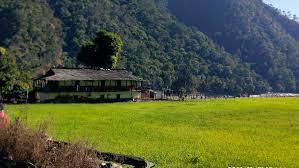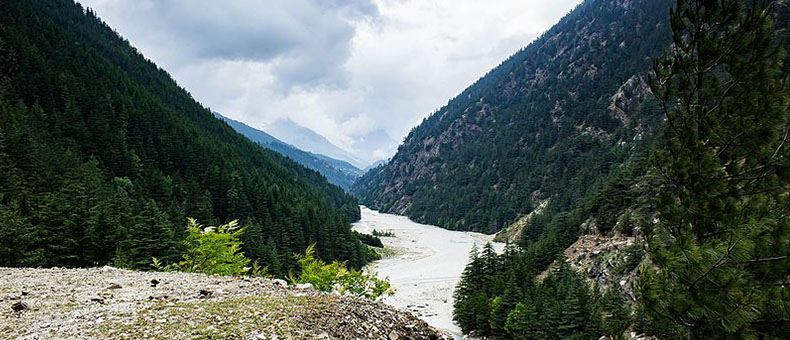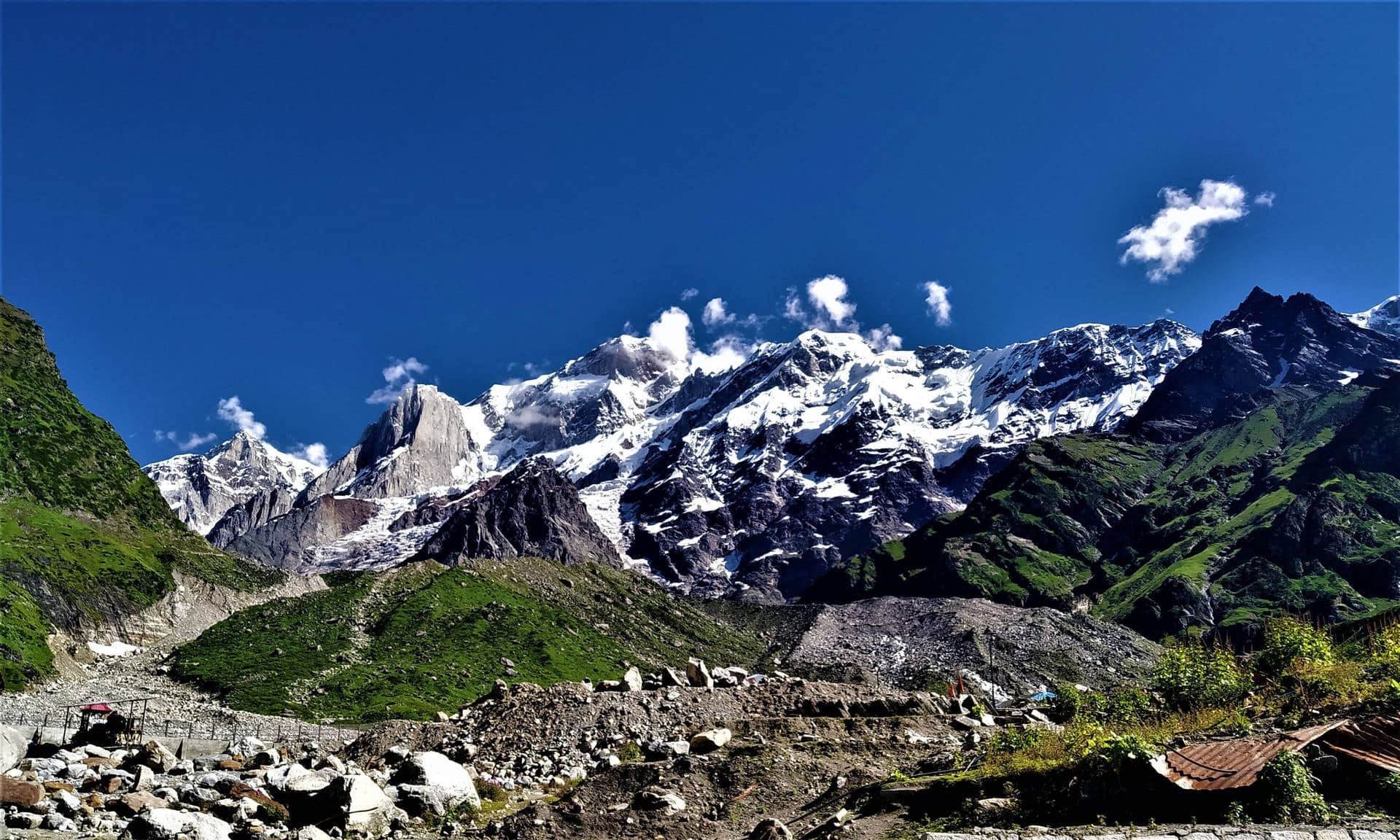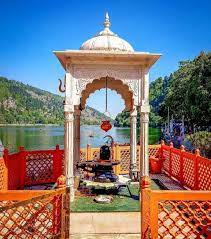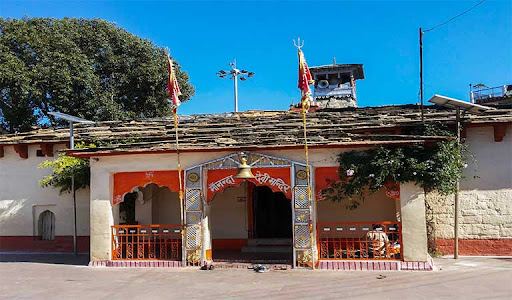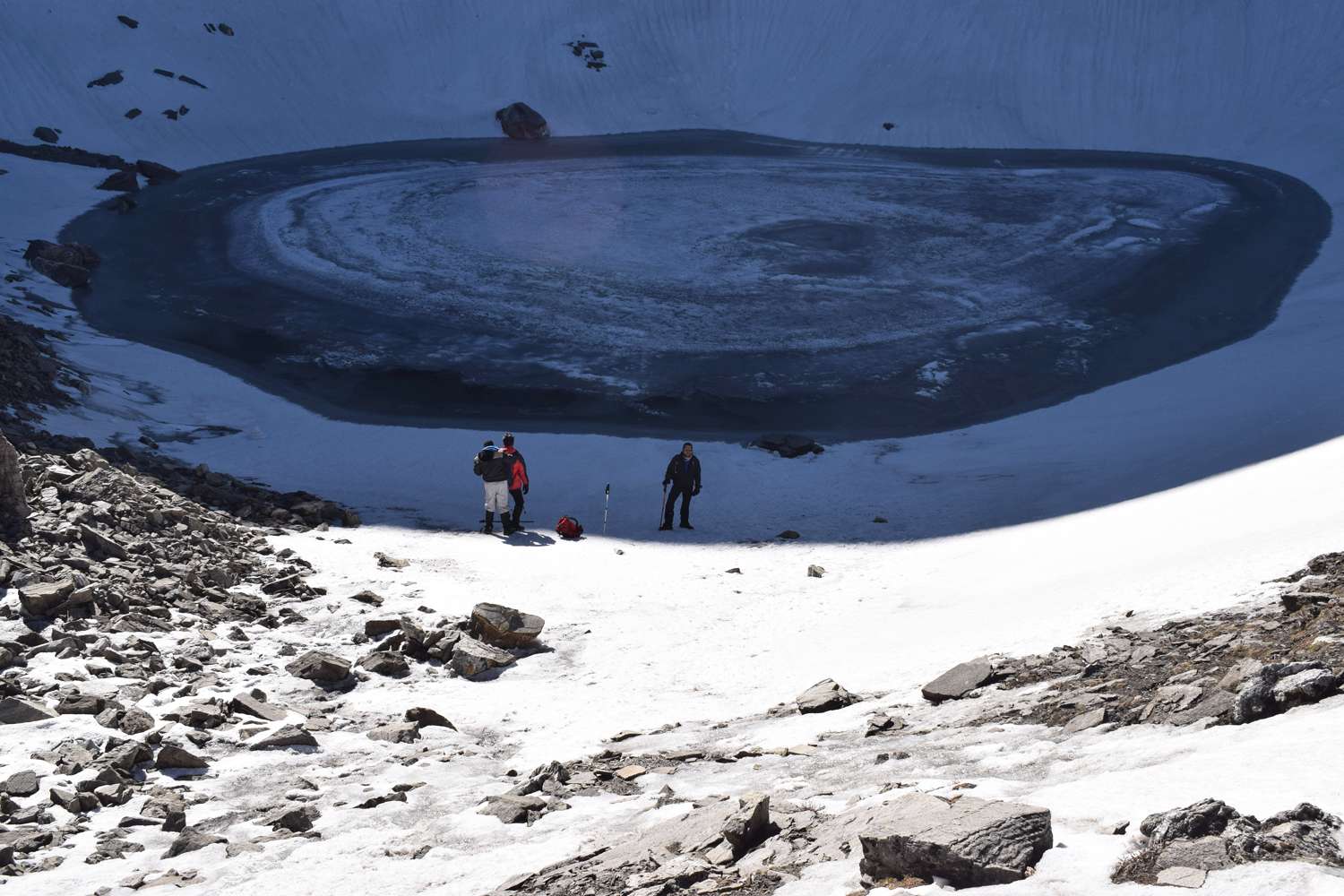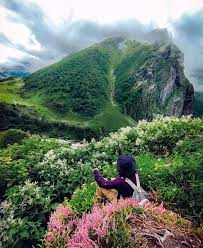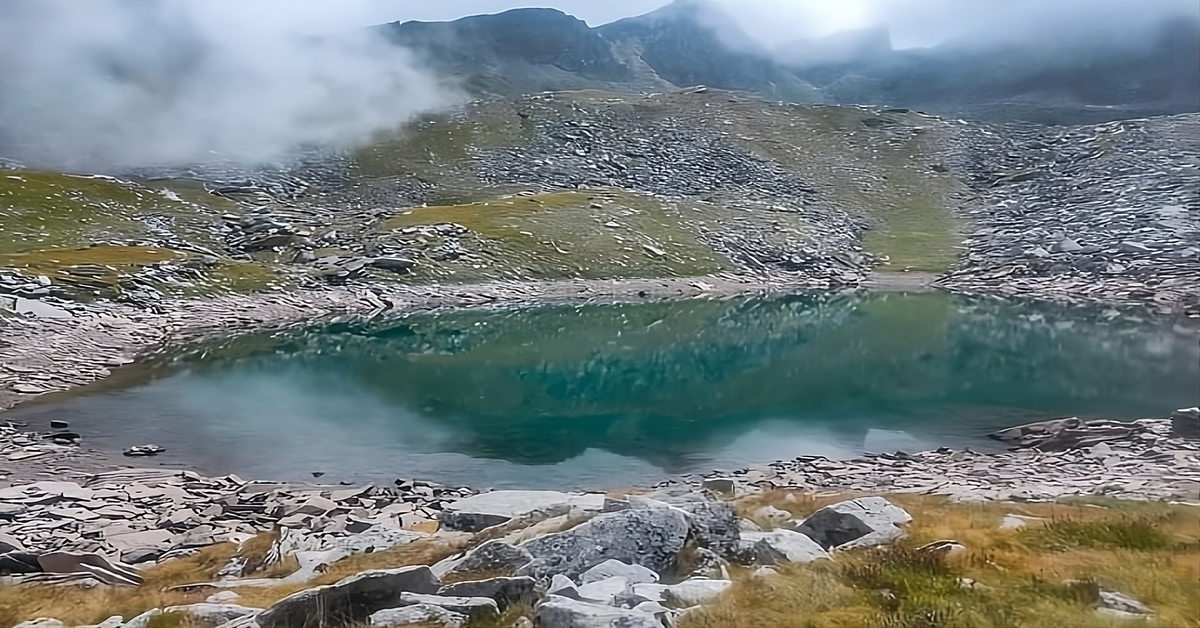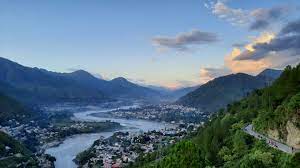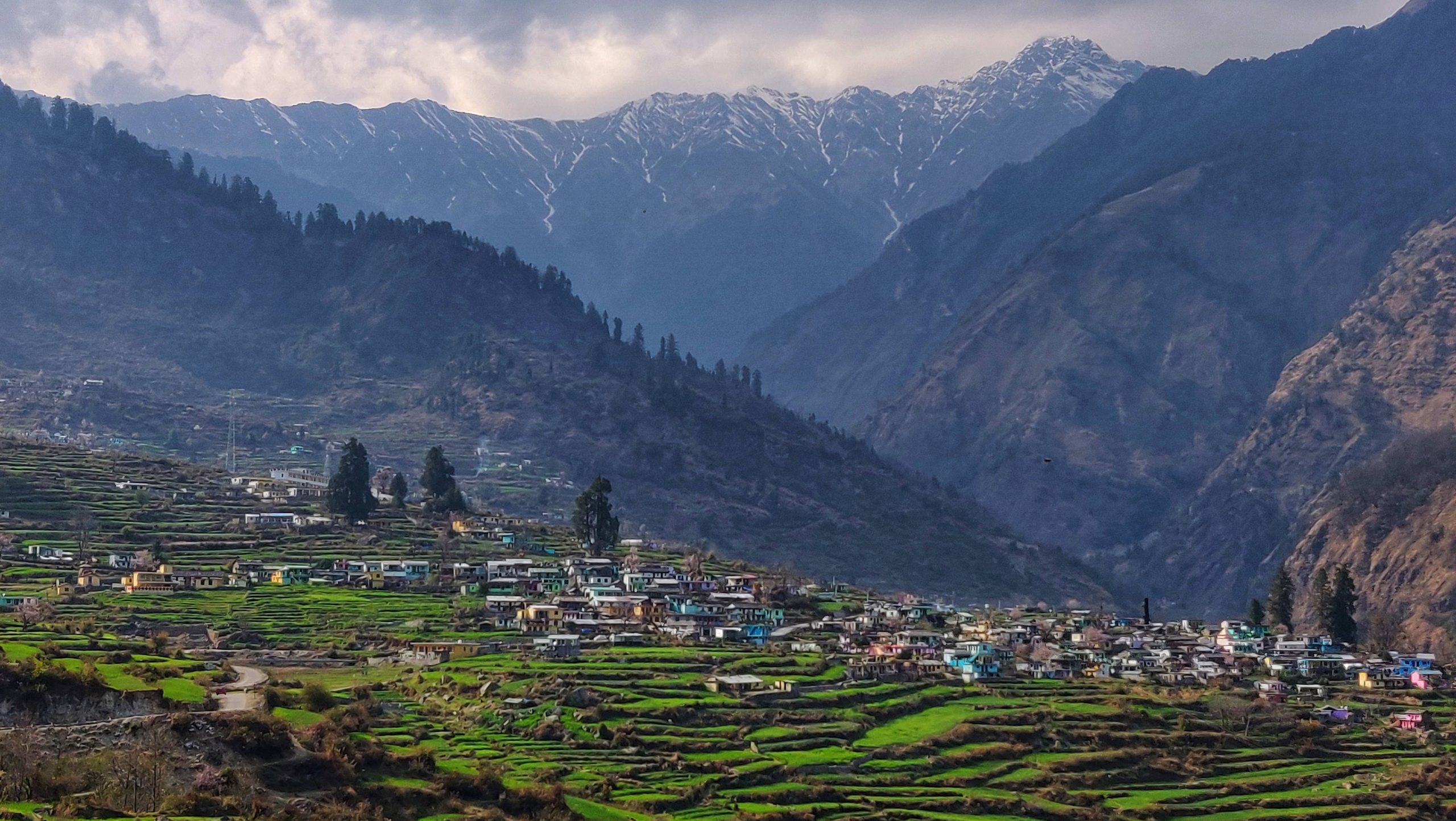Tanakpur (टनकपुर) doesn’t look like the start of a journey at first. It feels like a small, restless town by a wide river. Only after a while do you notice it is many things at once: a pilgrim’s stop, a market, a border crossing, and a doorway into the Kumaon hills.
The Sharda River (शारदा नदी) runs through everything here. Wide, fast, never quiet. The town has grown around it, leaning on its banks, listening to its sound day and night.
First Sight
The road flattens as you near Tanakpur. Farms stretch out, tea stalls smoke by the roadside, trucks rumble past carrying grain or stone. Then the river comes into view. Sharda spreads wide, its water pushing hard, carrying the weight of the mountains behind it.
The town itself is compact. Markets spill into the streets, rickshaws dart in and out, and temple bells ring somewhere close by. It is noisy, crowded, alive. Yet if you step towards the river ghats, all of it fades under the steady rush of water.
Pilgrims on the Move
For many, Tanakpur is not the destination but the start. Pilgrims arrive by train or bus, rest here for a night, and then set out for Maa Purnagiri (माँ पूर्णागिरि) temple, one of the सिद्ध पीठ where thousands gather during Navratri. Shops near the bus stand brim with coconuts, red chunris, and packets of prasad. You see families with bundles tied in cloth, waiting for jeeps to carry them uphill.
Inside the town, shrines are everywhere. A small Hanuman temple next to the bazaar. A Shiva lingam under a tree with bells tied to its branches. Nothing staged, just faith folded into daily life.
The River’s Hold
If Tanakpur has a heart, it is the river. At dawn, the ghats are full. Men bathe waist-deep in cold water, women light diyas and watch them float downstream. Children jump from stone steps, splashing each other as the sun rises behind the hills.
Fishermen work quietly at the edges, pulling in nets. Later, the catch ends up in market baskets, silver fish glinting against the sun. By evening, the river changes color, green turning to copper. The sound never softens, though. Even in the night, the current roars like a reminder that you’re standing at the edge of something vast.
A Border Town’s Rhythm
Drive a little further and you reach Banbasa, the point where the road crosses into Nepal. The presence of the border gives Tanakpur a character you don’t find in other towns this size. In the bazaar, you hear both Hindi and Nepali. Shops sell a mix of goods, packets of masala next to imported jackets, utensils stacked beside mobile covers.
Families cross often, for trade or festivals, hardly treating the border as a line at all. It gives the town an openness, a sense that it belongs to more than one map.
Lanes and Markets
Walk the marketplace lanes and you’ll locate stacks of woolens in a single store, brilliant saris inside the next, piles of spices laid out like coloured sand. The smell of frying pakoras and jalebi pulls you to each corner. Tea stalls are full of fellows leaning over small glasses of chai, talking politics or cricket. Rickshaw bells cut through the din, weaving around pedestrians without slowing.
It isn't polished, but it feels lived. That is the distinction.
Festivals Here
Navratri adjusts the entirety. Pilgrims crowd the streets, chants of जय माता दी echo through loudspeakers, and stalls selling bangles and sweets stretch beyond normal. The street to Purnagiri stays lit late into the night.
Other times of the year carry smaller gatherings. On Kartik Purnima, the river ghats glow with lamps. Holi spreads coloration throughout every lane, children chasing with water balloons till even shopkeepers surrender and snort. Diwali is quieter, with more houses sparkling than public shows, though the sight of diyas floating at the Sharda is difficult to overlook.
If You Go
- Best months: October to April. Summers burn hot, and monsoon swells the river dangerously.
- Getting there: Tanakpur has a railway station and a bus stand linking it to Champawat, Pithoragarh, and Almora.
- Stays: Budget hotels and dharamshalas line the primary roads. Pilgrims fill most rooms in the competition season, so book early.
- Food: Street meals are the real flavor right here samosas, jalebi, kachoris, and countless cups of chai.
- Pilgrimage: Maa Purnagiri temple lies approximately 20 kilometers away, reached by way of a street, after which a climb.
- Border: Banbasa crossing into Nepal is close by. Carry ID in case you plan to step across.
- Safety: Avoid swimming in deep stretches of the Sharda, in particular throughout the rains.
What Stays With You
Tanakpur does not pretend to be a hill station. It does not slow down for visitors. What you get is raw and unfiltered. The market noise. The river’s roar. The sight of pilgrims setting out uphill with chants on their lips. The smell of fried sweets rises in the evening air.
When you leave, it is not the monuments you remember, but the feeling of standing at a threshold. On one side, the plains. On the other hand, hills were waiting to rise. And always the Sharda flowing in between, restless and eternal.

